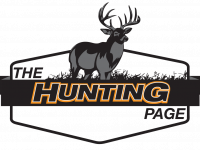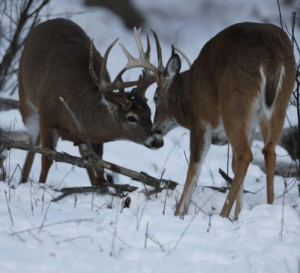Hunters across the United States, Canada and Mexico harvest millions of whitetail deer annually, and most of those animals are taken from tree stands.Hunters looking to harvest a mature buck (or any deer) from a tree stand should pay close attention to the stand placement to maximize their chances of success.Each seasonal phase influences your tree stand placement choices, and knowing a little more about the separate portions of time can help immensely when it comes to hitting your target.
Why Tree stand Placement Matters
Some hunters believe that one tree is as good as the next when it comes to treestand placement. They think if they put in their time eventually a big buck will come walking by.
Nothing could be further from the truth. While it is true that time spent in the woods increases your odds for success, hunters who blindly sit the same stand site throughout the season are destined to see mediocre results at best.
The best plan of attack is to establish multiple stand sites to take advantage of changes in whitetails’ behavior throughout the course of the season.
Phase One: Early Season (Opening day-October 9)
At this time of year a deer’s life revolves around food. This should be considered when thinking about early season tree stand placement.
If you are looking to harvest a doe or young buck and put some venison in the freezer, setting up on the downwind side of food source is a good bet. This type of stand location is best hunted in the evening to allow access to the stand without spooking deer off the food source. Deer will typically start entering the food source about a half an hour before dark.
If it is a mature buck you are after, you should hunt staging areas during this phase of the season. A staging area is an area located near a food source where mature bucks hang out or “stage” before entering the food source after dark. Staging areas can be created by planting small mini-food plots just inside the woods from a larger food source.
Phase Two: The Lull (October 10-25)
Phase two is a hunter’s least favorite.
Experts disagree on why deer move less during this period. Some believe it is a response to hunting pressure, others think the falling leaves and lack of concealing foliage make deer feel vulnerable, or it may be that the mature bucks are resting up for the coming breeding season. Whatever the reason, deer movement is slow during this phase of the season.
The best thing a hunter can do to increase their chance of connecting on a mature buck is to stay out of their best spots during this phase of the season.
If you do hunt, place your stands as close to bedding areas as possible. Be careful not to spook deer as this will negatively impact the rest of your season, and smart hunters know the best is yet to come.
Phase Three: The Pre-Rut (October 26-November 3)
During this phase of the season, rubs and scrapes will be popping up everywhere. Use information from prior years and careful on-the-ground scouting to determine which scrape and rub lines are receiving the most buck traffic, and set up along these routes.
This is the best time of year to harvest that mature buck you have on trail camera. Bucks will exhibit more daytime movement than in previous phases, but still maintain a somewhat regular schedule. They will also keep mostly to their home range.
Phase Four: The Chase (November 4-12)
During this phase some does will have come into estrus, causing bucks to begin actively seeking receptive females.
Tree stands should be placed in funnels and travel corridors. Bucks will use the path of least resistance while sticking to the best available cover when scent checking for does. Hunters should be prepared to stay on stand all day during this phase, because daytime movement will be at a yearly high.
In addition to proper tree stand placement, hunters will have the most success with rattling and grunting during this phase.
Phase Five: Breeding Lockdown (November 13-20)
This is the time of year most of the does will be bred. When a buck finds a receptive doe, he will herd her into thick cover and stay with her until breeding occurs. This process can take anywhere from a couple of hours to a couple of days. Movement will decrease drastically from the chase phase.
The good news for hunters is that once a buck has bred a doe, he will move until he finds another.
Treestand placement for this phase should focus on thick cover. Set up on the downwind side of the nastiest thicket on your hunting property and put in your time. Eventually a buck will come out of the cover or attempt to move a doe into it. Patience is the key during this phase because action can go from cold to hot in a matter of minutes.
Phase Six: Post-Rut (November 25-End of Season)
Once most of the does have been bred, there may be a slight increase in deer movement, with bucks searching for the last un-bred does. During this period, which usually only lasts a few days, you should sit in your phase four stands.
After breeding is done, bucks need to eat in order to regain calories lost during the rut. Food sources are once again your best option for tree stand placement. Hunters should be prepared to hunt during periods of unseasonably cold weather as this will force bucks to eat.
A shorter less intense ‘second rut’ occurs in some areas when unbred does and yearlings come into heat. Most of the chasing and breeding during this period takes place near major food sources where does congregate, further reinforcing the food source tree stand placement option.
All Season Long
Hunters should keep a few things in mind whenever they head to a tree stand. From phase one through six, hunters should strive to:
- Have multiple stand sites: Over hunting any stand can cause the area to go cold.
- Practice scent control: Never sit a stand when the wind is not in your favor and adopt a strict scent control system while hunting and hanging stands
- Establish entry and exit routes to your tree stands: Make sure you are not spooking deer on the way into or out of your hunting location. This may mean a longer walk back to the truck but the end result will be worth it.
Tree stand placement is one of the most important elements to a successful whitetail hunt.



